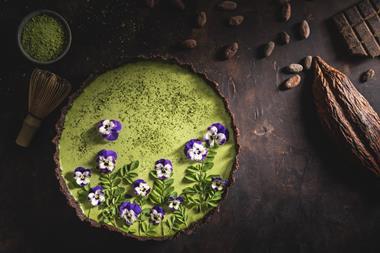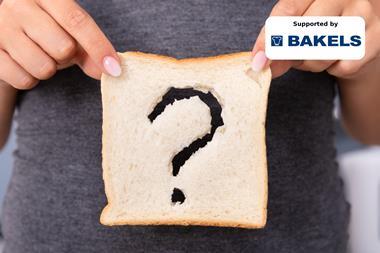How are yeast suppliers adapting to changing conditions in the bakery market and increased flavour demand?
Next time you reach for that block of yeast, spare a thought for what it takes to develop and manufacture an ingredient often taken for granted.
Just outside Hull, for example, is a site operated by AB Mauri that is dedicated to the production of the off-white stuff, where a vast network of laboratories, pipes and vessels manufactures thousands of tonnes of yeast a year.
At the Hull facility, a tiny amount of seed yeast is allowed to grow in a mixture of nutrients and, in a series of steps, is transferred into larger and larger vessels until it fills one of the site’s massive silos. From there it will be filtered to make liquid (or ‘cream’) yeast used by plant bakeries, or further dewatered to produce the blocks of compressed yeast typically used in smaller bakeries (see box out p42).
While the function of yeast in the baking process is at the core of AB Mauri’s development work, the business is also conducting a lot of research around flavour at its dedicated facilities in Sydney, Australia.
The changing shape of the UK bread market – with the continuing, albeit slowing, decline in sales of plant bread – means yeast suppliers must ensure they have the products to meet shifting demand, says Mike Abraham, general manager at Lesaffre UK and Ireland.
“Manufacturers must ensure they have appropriate yeasts available to satisfy the alternative developing processes, for example, higher stress performance in frozen/bake-off processes or for longer, flavour-developing fermentations,” he adds.
Lesaffre yeasts range from the highest activity and propionate resistance for fast-proof processes, to high-tolerance yeasts for proving over several hours or even days. Last year, the company boosted its UK presence with the acquisition of Worcester-based baking mix supplier LFI Tollblend.
“With access to major multi-strain yeast factories in northern Europe, Lesaffre’s policy is to supply the most appropriate yeasts for customers’ particular processes, where commercially possible,” says Abraham.
In addition to process and flavour benefits, yeast strains can also add nutritional functionality to baked goods. Lallemand, for example, has enjoyed success with its Vita D Yeast, which it says is used in markets around the world, including by Marks & Spencer in its UK bread range.
The business also produces an organic yeast range that is sold in the UK and Europe.
Given the continued development of yeast products, how should a baker select which is most suitable for their requirements?
“Yeast choice is based on the type of dough being produced,” says Quinn. “Lean doughs with little or no sugar would use the high active yeast when using the Chorleywood Baking Process. Traditional yeast is more suited to those bakers looking for longer proof time in order to enhance flavour.”
Bakers can also turn to their yeast supplier or the manufacturer for advice on yeast choice. “Yeast is a wide spectrum within the industry and many different attributes will offer different performance options within the finished product,” says AB Mauri UK & Ireland marketing business partner Sam Cook. “It’s important that customers ask for localised advice when it comes to creating that final point of difference.”
Raising the curtain on yeast production
How AB Mauri’s factory in Hull produces 28,000 tonnes (t) of cream yeast and 10,000t of compressed yeast a year
- Fermentation – The process begins with a tiny vial (called a slant) containing a few cells of Saccharomyces cerevisiae. The cells are fed a nutrient mix including water and molasses (AB Mauri’s Hull site uses 500,000t of water and 23,000t of sugar derived from molasses a year) and are grown in a series of larger containers until the commercial yeast mixture fills a storage silo. At this stage, the mixture contains 8% dry matter (DM).
- Separation – The yeast is collected by separating it from the liquid in a centrifuge that results in a cream yeast (20% DM). This cream yeast is delivered by AB Mauri tankers direct to plant bakeries for large-scale production.
- Filtration – Cream yeast is filtered using a rotary vacuum filter. This comprises a large rotating cylinder that sucks water out of the product, resulting in a solid product that is scraped off the drum using a knife that sits parallel to the cylinder (see picture above). This process results in the compressed yeast (30% DM) that is packaged into blocks.
- Drying – Some facilities further dry cream yeast to produce a dry yeast product (96% DM).
Yeast storage: playing it cool
To get the best performance from your live yeast – whether the cream or block product – the number one consideration should be temperature. Any significant rise in temperature above the recommended level from the supplier will cause the yeast to respire faster.
“As live fresh yeasts respire to varying degrees, they will self-generate heat, thus increasing in temperature,” says Lesaffre UK and Ireland general manager Mike Abraham. “Refrigeration will remove this heat, but the refrigeration conditions will determine the temperature of the yeast above the fridge set point.”
“Refrigeration, alongside the yeast’s natural respiration, has the tendency to dry the yeast by accelerating moisture removal. There is no significant damage to the yeast from this – just removal of moisture/weight,” he adds.
Bakers using block yeast should also bear in mind how the packs are stored. “It needs to be stacked so as to allow the free movement of air around the boxes or blocks of yeast – thus allowing that heat being generated to be removed,” says Sam Cook, marketing business partner, AB Mauri UK & Ireland.





























No comments yet